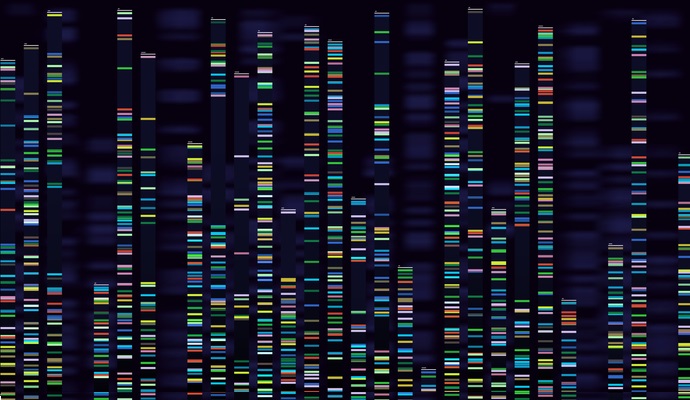Education, Infrastructure Key to Precision Medicine Adoption
While healthcare has increasingly embraced precision medicine, a lack of education and advanced infrastructure are still major barriers to adoption.

Source: Getty Images
- To increase precision medicine adoption, healthcare leaders must build education among patients and providers, implement advanced infrastructure, and boost patient engagement, according to a report from the Personalized Medicine Coalition (PMC).
The prevalence of precision medicine treatments has increased in recent years, PMC noted. The report shows that the number of personalized medicines on the market in the US has grown from 132 in 2016 to 286 in 2020 – the largest four-year increase since PMC began tracking this figure in 2008.
“Because our increasing understanding of human heterogeneity demands it, healthcare is in the midst of a transformation away from one-size-fits-all, trial-and-error medicine and toward this new, targeted approach in which, as is often said, the right patient will get the right treatment at the right time,” PMC said.
“Completing that transformation, however, will require a collaborative effort based on shared values across stakeholder groups to keep up with the pace of progress in science and technology. A myriad of complicated regulatory and reimbursement challenges as well as practical obstacles related to the clinical adoption of new medical practices and processes, however, make it difficult for healthcare systems to capitalize on innovative science and technology.”
To accelerate adoption in healthcare, PMC stated that leaders will need to increase education and awareness among patients and providers.
READ MORE: Genomic Data Advances Precision Medicine for Prostate Cancer
“Freely available educational resources are being developed by a number of organizations that are presented in multiple formats based on the needs of different stakeholders. However, they must be accurate, trusted, and updated regularly,” PMC wrote in the report.
The Genomic Medicine Institute at Cleveland Clinic and others host accredited genetics education symposia for practicing healthcare providers. Mayo Clinic’s Center for Individualized Medicine educates members of the healthcare team and patients about personalized medicine and its implications in practice through professional development courses and ongoing education. But even these well-developed programs reach only a fraction of the available population.”
Pharmacists have proactively approached precision medicine education and awareness, PMC noted.
“Pharmacogenomics has been a required element of every Doctor of Pharmacy curriculum in the US since 2016. Graduate programs in pharmacogenomics and precision medicine are now common, and certification programs are available regionally and nationally,” the coalition stated.
“The initiatives in pharmacology may inform efforts to integrate personalized medicine into educational programs in other areas of medicine.”
READ MORE: Top 3 Challenges of Integrating Precision Medicine with Routine Care
To help clinicians draw actionable conclusions from the massive amounts of patient data – and to make this information available at the point of care – organizations will need to enhance their IT infrastructure, PMC stated.
“Capturing, interpreting, and sharing complex yet accurate patient data, including genomic information along with phenotypic and medical data, requires that providers adopt powerful health IT platforms that enable connections between real-world clinical results and molecular data so that providers can make clinical decisions based on a body of scientific knowledge that exceeds the training, experience, or memory of any single practitioner,” PMC said.
This industry-wide technological change should start with the EHR, PMC noted. EHRs are often ill-equipped to process complex molecular information. While standards like FHIR are helping EHR developers to manage clinical data more easily, PMC said that leaders still need to implement standards on what should be included in EHRs.
The ability to share data among organizations will also be key to increasing adoption of precision medicine.
“The flow of data to and from different projects, institutions, and sectors can foster a data-sharing environment consisting of networked resources,” PMC said. “With the help of proper data-sharing safeguards and supporting initiatives, many leaders in health care believe such a system will soon be within reach.”
READ MORE: How Precision Medicine, Genomics Research is Decoding COVID-19
Additionally, PMC pointed out that as precision medicine becomes more widely adopted, providers will need to engage with patients in new ways.
“Practitioners are recognizing that they need to regularly involve patients in healthcare decision-making,” PMC stated.
“Some providers are developing genetic counseling service policies to ensure that patients, early in their care, are able to understand their individual molecular information and its implications so that they can make informed decisions regarding its disclosure and use before problems arise.”
Ultimately, the increased adoption of precision medicine in clinical care will require several meaningful changes to the industry, in every sector of the healthcare sphere.
“To keep up with the technology, every corner of the healthcare spectrum must come together to advance science-driven, value-based solutions. Healthcare delivery organizations must successfully integrate personalized medicine into clinical practice. Patients must participate in their own health care choices, taking an active role in expressing their concerns about data sharing and access to personalized treatments,” PMC concluded.
“Much work remains to be done in building the infrastructure for personalized medicine, but the resources we invest in completing the task now will enable us to realize the health and economic benefits of matching the right prevention or treatment strategy to each and every patient.”
